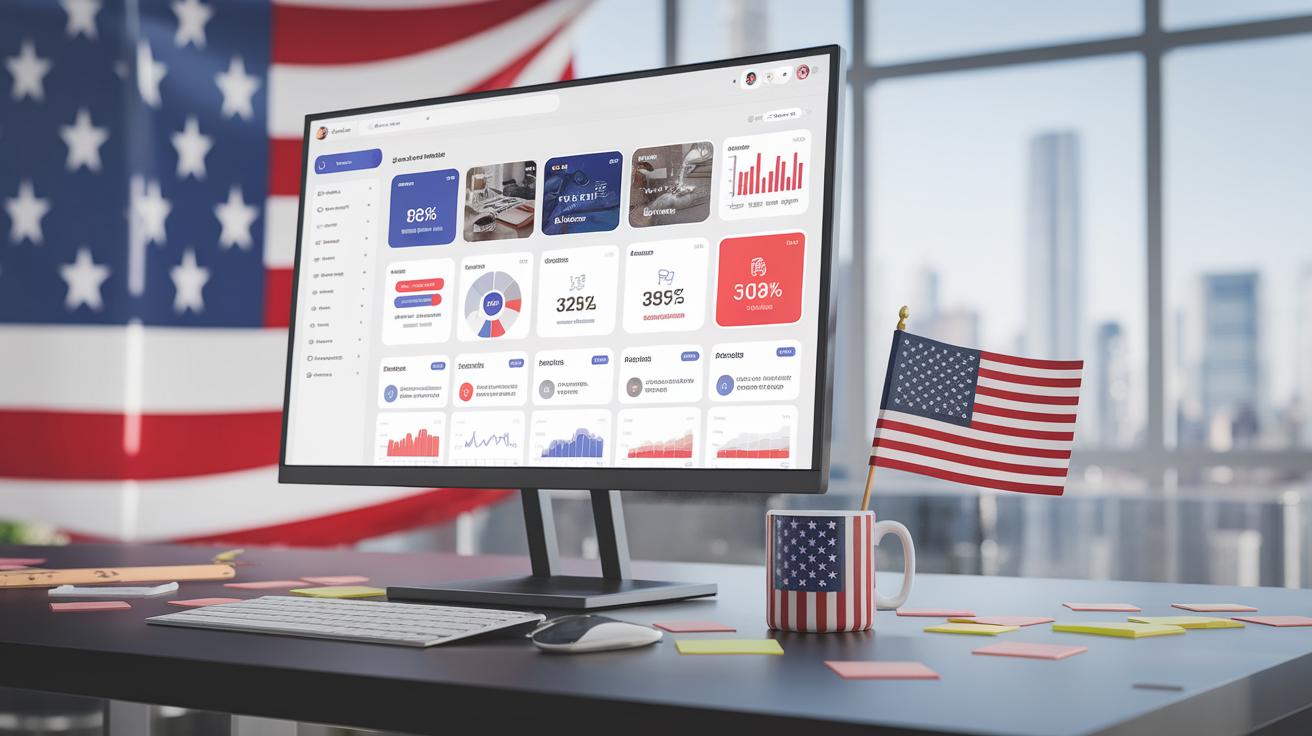Introduction
In the ever-evolving landscape of USA marketing, businesses must stay ahead of the curve to navigate the dynamic forces that shape consumer behavior. With the rise of social media platforms, particularly Pinterest, marketers are discovering powerful avenues to connect with their audience. Pinterest’s unique visual appeal, combined with its ability to drive traffic and sales, positions it as a critical tool in creating effective marketing strategies. This article explores the latest trends that are driving success in Pinterest marketing, providing insights into how brands can leverage these trends to enhance their online presence.
This exploration offers a thorough understanding of various marketing trends that are reshaping how brands interact with their customers on Pinterest. We will delve deep into powerful strategies, audience engagement techniques, and effective content creation methodologies. By grasping these trends, businesses can tailor their marketing efforts to achieve higher conversion rates, ultimately leading to a more significant impact in the competitive marketplace of the USA.
The Importance of Visual Content in Marketing Shaping USA Marketing Success
Working in modern marketing, visual content has emerged as a critical factor for capturing consumer attention and fostering brand loyalty. As consumers are inundated with a barrage of information, the ability to convey messages quickly and effectively through images and videos has become paramount. Data indicates that visual content can increase engagement rates significantly; for example, posts featuring images receive up to 94% more views than their text-only equivalents. This trend emphasizes the necessity of incorporating compelling visual elements into marketing strategies for brands aiming to enhance their visibility and appeal.
Platforms like Pinterest are uniquely positioned to harness the power of visual storytelling, allowing users to discover, curate, and share their interests through images. With its emphasis on aesthetics and creativity, Pinterest provides marketers with a platform that is specifically designed for the interpretation and appreciation of visual content. As users scroll through endless boards filled with stylish designs, DIY projects, and lifestyle inspirations, brands can effectively connect with audiences in a visually engaging manner. These interactions not only bolster consumer engagement but also encourage brand recognition, driving higher conversion rates.
The efficacy of visual content on platforms like Pinterest is magnified by the platform’s user demographics. Pinterest users tend to be highly engaged and often seek inspiration for their future purchases, making it an optimal venue for brands to showcase their offerings visually. In fact, nearly 85% of Pinners use the platform to plan significant aspects of their lives, from weddings to home décor, which creates an excellent opportunity for brands to align their marketing strategies with the aspirations of these users.
Understanding the critical role of visual content in marketing is essential for brands that hope to thrive in the competitive landscape of the USA. As the preference for engaging, visually-rich content continues to rise, marketers must refine their strategies to ensure they stand out amidst a crowded digital environment. By leveraging platforms tailored for visual storytelling like Pinterest, brands can significantly impact consumer behavior, leading to successful marketing outcomes and long-term brand loyalty.
Crafting Engaging Pin Content Best Practices for Success
Design Elements that Resonate
In the landscape of Pinterest marketing, crafting compelling pin content is paramount to attracting and retaining user attention. The foundation of successful pin design lies in its visual appeal and relevance to the target audience. Start by utilizing a vertical aspect ratio, as tall pins tend to catch the eye more effectively than standard images. A common recommended size is a 2:3 ratio, which optimally fills the screen while scrolling. Colors play a significant role in the design; research indicates that warm tones, particularly reds and oranges, generate more engagement. However, aligning the color scheme with brand identity while ensuring high contrast between text and background is essential for readability.
The Power of Text Overlay
Text overlay enriches pin content by offering context and enhancing storytelling. When incorporating text, prioritize clarity and brevity; users should grasp the message within seconds. Using large, bold fonts ensures legibility, even on smaller screens. Phrasing should reflect user intent—words such as “how to,” “tips,” or “DIY” resonate well with Pinterest’s primarily female demographic seeking inspiration or guidance. An effective approach is to maintain a hierarchy in text size: the main message takes the forefront, whereas secondary details can be smaller yet still visible. Keep in mind that including a call-to-action (CTA) boosts engagement, prompting users to click through for more information.
The alignment between visuals and text is crucial. A disjointed design can confuse viewers, causing them to scroll past the pin without engaging. Therefore, imagery should complement the text, creating a harmonious composition that conveys a cohesive narrative.
The Importance of High-Quality Images
High-quality images are vital in ensuring that pins stand out in Pinterest feeds cluttered with competing content. Clear, sharp visuals not only enhance aesthetic appeal but also signal professionalism and credibility. When creating pin images, avoid over-editing, which can detract from authenticity; instead, aim for natural lighting and unfiltered scenes that evoke genuine interest. User-generated content, such as testimonials or real-life applications of products, can be particularly effective, as it fosters trust and relatability.
Success on Pinterest hinges on a strategic combination of design elements, effective text overlay, and impeccable image quality. Crafting pins that resonate with the target audience requires constant testing and adapting to feedback, ensuring that marketing strategies remain aligned with user preferences and trends.
Utilizing Trends for Content Strategy
Analyzing Seasonal Trends and Emerging Topics
Marketers seeking success on Pinterest can capitalize on powerful trends that resonate with users and align with their content strategies. Seasonal trends, often driven by holidays, weather changes, or societal events, significantly influence user behavior and interests on the platform. By staying attuned to these fluctuations, brands can create timely and relevant content that captures attention and encourages engagement.
For instance, as the holiday season approaches, users flock to Pinterest for inspiration on gift ideas, decorating tips, and festive recipes. Marketers should prepare for this surge by developing seasonal boards that highlight unique offerings, visually appealing designs, and engaging descriptions tailored to holiday themes. Crafting content that taps into specific occasions, such as Halloween or Valentine’s Day, allows brands to position themselves as go-to resources for users looking to plan their celebrations.
Emerging topics also play a crucial role in shaping content strategies. As shifts in consumer preferences become apparent—such as increased interest in sustainability or wellness—marketers can respond by producing content that addresses these trending themes. For example, posts highlighting eco-friendly products or healthy lifestyle tips can attract and engage an audience eager for actionable advice. By actively monitoring Pinterest trends and user sentiments, brands can identify opportunities to create content that aligns with current interests.
Another effective technique is utilizing Pinterest’s search bar to gauge popular queries and topics. When users search for a term, Pinterest’s predictive text feature provides insights into trending queries. Incorporating these popular keywords into content can enhance visibility and engagement, as users are more likely to interact with Pins that resonate with their immediate interests.
It is beneficial to analyze Pinterest’s monthly trend reports, which detail rising topics and user interests. These reports can inform content calendars and help marketers stay ahead of the curve by providing data on what users are searching for and pinning in real time. By aligning content strategies with these insights, brands can not only attract a dedicated following but also foster community engagement around shared interests.
Leveraging seasonal trends and emerging topics empowers marketers to craft content that not only resonates with existing audiences but also captivates new users on Pinterest. Engaging with the platform’s tools can lead to innovative strategies that enhance brand visibility and foster meaningful connections with users.
Understanding Audience Insights on Pinterest Leveraging Tools and Metrics for Enhanced Targeting
Importance of Audience Insights in Pinterest Marketing
Pinterest serves as a robust platform for brands to engage with their target audience, making understanding audience insights a pivotal aspect of marketing strategy. Marketers can take advantage of Pinterest’s unique user demographics and behavior metrics to refine their targeting efforts. Utilizing Pinterest Analytics, businesses can gain valuable data that uncovers who their audience is, what they find interesting, and how they interact with various content types. Such insights are instrumental in crafting personalized marketing messages that resonate effectively with users.
An integral part of deciphering audience insights is examining metrics like impressions, clicks, and saves. These indicators showcase which pins are capturing attention and engagement. By monitoring this data, marketers can make informed decisions on content creation and optimize their pins to align with audience preferences. Furthermore, analyzing the demographics of users engaging with content helps brands tailor their strategies toward specific segments based on age, location, and interests.
Tools for Effective Audience Analysis
Marketers can utilize several tools to streamline the process of gathering and interpreting audience insights on Pinterest. One such tool is Pinterest Trends, which allows marketers to see what topics are currently gaining traction among users. This feature enables brands to tap into trending ideas and tailor their content strategically, aligning it with user interests.
Another essential resource is the Audience Insights report available in Pinterest Analytics. This tool presents a comprehensive overview of audience engagement, highlighting key metrics such as top boards and pin types that attract the most attention. Additionally, marketers can leverage third-party analytics platforms that can integrate with Pinterest, providing deeper insights and a more comprehensive overview of audience interactions across multiple channels.
Personalization is increasingly becoming central to effective marketing strategies. Segmenting audiences based on insights gathered can help in delivering tailored recommendations that enhance the user experience. By understanding consumer behaviors and preferences, marketers can foster a deeper connection with their audience, leading to increased engagement and conversions.
Utilizing the available tools and metrics to gain insights into audience behavior on Pinterest can significantly influence a brand’s marketing strategy. Ensuring that messaging is tailored to user interests not only enhances engagement but also drives higher conversion rates. As brands prepare for the integration of e-commerce features on the platform, these audience insights will serve as a foundational element in optimizing their approach for a seamless shopping experience.
Integrating Ecommerce with Pinterest Marketing How Ecommerce Features Drive Success
The integration of e-commerce capabilities on Pinterest is fundamentally transforming how brands approach marketing on the platform. As consumer shopping behaviors evolve, the necessity for seamless online shopping experiences has become paramount. Pinterest addresses this demand by offering a variety of e-commerce features that enhance user engagement and drive sales conversions.
Enhancing Shopping Experiences Through Product Pins
One of the key features promoting e-commerce on Pinterest is the introduction of Product Pins. These specialized pins allow brands to showcase their products with real-time pricing, availability, and product descriptions. This integration not only provides users with essential information but also streamlines the shopping process. Users can click directly through to the brand’s website for a purchase, making the transition from inspiration to transaction effortless.
The use of Rich Pins, which offer more detailed information than standard pins, has increased visibility for brands. Rich Pins automatically sync with a business’s inventory, allowing for updated information without requiring manual adjustments. This automation helps maintain accuracy, ensuring potential customers are provided the most current details about the products they are interested in.
Shopping Catalogs and Pinterest’s Seamless User Journey
Another significant aspect of Pinterest’s e-commerce strategy is the use of Shopping Catalogs. Retailers can upload their entire product range to Pinterest, transforming their online store into a visual shopping experience. This feature not only aids in product discovery but also encourages users to explore various items within a category, leading to increased engagement and longer session durations.
The implementation of the Shop Tab on a business profile further enhances the user journey. This dedicated section organizes all products in a visually appealing and user-friendly manner, allowing potential buyers to browse efficiently. As users navigate through curated collections tailored to their interests, the likelihood of impulse purchases rises—highlighting the importance of creating an enticing shopping environment.
Integrating these e-commerce features is not just about improving sales; it is also about cultivating brand loyalty. By providing a high-quality shopping experience on Pinterest, brands can establish connections with users who feel understood and valued. As Pinterest continues to evolve its shopping capabilities, marketers must leverage these tools to adapt to changing consumer expectations and positioning their products effectively, ensuring sustained success in the competitive digital landscape.
Future Trends in Pinterest Marketing Shaping Strategies for Success
Emerging Trends Impacting Pinterest Marketing
As Pinterest continues to evolve as a powerful tool for businesses, several emerging trends are poised to redefine how brands engage with audiences on the platform. One key trend is the integration of artificial intelligence (AI) and machine learning, which is likely to enhance personalization in marketing strategies. By leveraging AI, marketers can analyze user behavior more effectively, allowing for tailored content that resonates with specific demographics, interests, and even seasonal trends.
The influx of video content is becoming increasingly significant. With the rise of platforms that prioritize short-form video, Pinterest is expected to ramp up investment in video pin features. This shift will not only allow businesses to showcase products more dynamically but will also cater to users who prefer engaging visuals. Tutorials, behind-the-scenes looks, and inspiring stories are facets of video content that could foster deeper connections with users, thereby boosting engagement and conversions.
Technological Innovations Influencing Marketing Strategies
Augmented reality (AR) is another innovative technology set to transform Pinterest marketing. Brands may soon be able to implement AR experiences that enable potential buyers to visualize products in their own environment before making a purchase. For example, furniture retailers might offer tools that allow users to see how a piece of furniture would look in their living room, improving the customer journey and reducing post-purchase dissonance.
The ongoing shift toward sustainability will also play a critical role in shaping marketing strategies on Pinterest. As consumers become more mindful of their purchase decisions, brands that promote eco-friendly practices and sustainable products are likely to gain traction. Marketers can leverage Pinterest’s capabilities to highlight eco-conscious initiatives, inspiring users to support brands that align with their values.
The integration of shopping features will likely become more nuanced. Future enhancements may include shoppable pins, which offer a more streamlined purchasing process. Users may soon be able to click directly from a pin to a checkout page on the brand’s website, optimizing the path to purchase and minimizing drop-off rates.
The future of Pinterest marketing will likely be shaped by a confluence of AI-driven personalization, video content, AR technology, sustainability, and advanced shopping features. By staying attuned to these trends, brands can develop more effective marketing strategies, ultimately enhancing their presence on the platform and reaching their target audiences successfully.
Conclusions
Trends shaping Pinterest marketing success in the USA are indicative of a broader shift in consumer expectations and behaviors. Marketers must prioritize visual content, authenticity, and engagement to capture the attention of their target audiences. As we have discussed, understanding the AIDA model is essential in guiding the consumer journey from awareness to action, enhancing the overall effectiveness of marketing campaigns.
Adopting these trends will enable businesses to foster meaningful connections with their audiences, resulting in increased brand loyalty and sales. As Pinterest continues to evolve, marketers should remain agile and adapt their strategies to harness the platform’s full potential, ensuring they sustain a competitive edge in the fast-paced world of marketing.
















